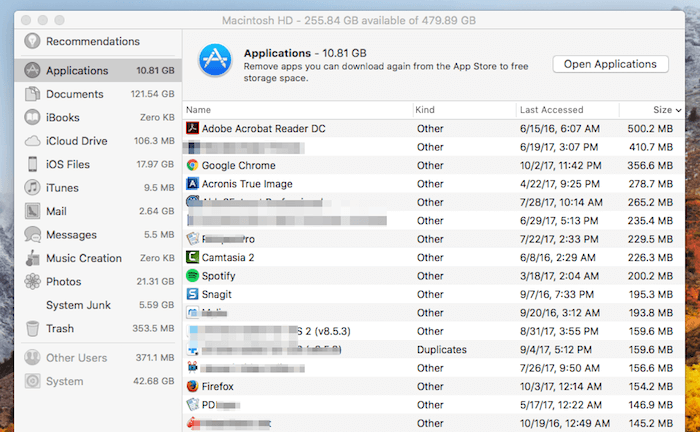

- #Delete section break mac 10.13.3 how to#
- #Delete section break mac 10.13.3 install#
- #Delete section break mac 10.13.3 software#
- #Delete section break mac 10.13.3 code#
The advantage of a VM is that you can install it on your daily use machine and still keep the SDK isolated. Use a VirtualBox Virtual Machine (or other virtualization system) and run an isolated Ubuntu 16.04 OS in the VM. The install process is not entirely isolated and can/will change existing libraries on your system. In other words, don’t install the SDK on a “daily development and productivity use” machine where you might have Python Virtual Environments and OpenCV installed. I highlighted “Stand-alone” as it’s important that this machine only be used for Movidius development.

#Delete section break mac 10.13.3 how to#
In this section we’ll learn how to install the SDK which includes TensorFlow, Caffe, OpenCV, and the Intel suite of Movidius tools. Deploy the Python script and graph file to your single board computer equipped with an Intel Movidius NCS.Write a Python script which deploys the graph file and processes the results.Convert the model to a deployable graph file using the SDK and an NCS.Train a model using a full-size machine.Last week, I reviewed the Movidius Workflow. Installing the Intel Movidius SDK Figure 1: The Intel Movidius NCS workflow (image credit: Intel) Refer to this section often - I expect it to grow as I receive comments and emails. Today, we’re going to see how the NCS paired with a Pi performs against the Pi CPU using the same model.Īnd finally, I’ve captured some Frequently Asked Questions (FAQs). We achieved approximately 0.9 FPS which serves as our benchmark comparison. In a previous post, we learned how to perform real-time object detection in video on the Raspberry Pi using the CPU and the OpenCV DNN module. Next, we’ll test the script + compare results. Today’s blog post is broken into five parts.įirst, we’ll install the Movidius SDK and then learn how to use the SDK to generate the Movidius graph files.įrom there, we’ll write a script for real time object detection with the Intel Movidius Neural compute stick that can be used with the Pi (or alternative single board computer with minor modifications).
#Delete section break mac 10.13.3 code#
Looking for the source code to this post? Jump Right To The Downloads Section Real-time object detection on the Raspberry Pi Learn more about OpenVINO in this PyImageSearch article.
#Delete section break mac 10.13.3 software#
To get started with real-time object detection on the Raspberry Pi, just keep reading.ĭeprecation Notice: This article uses the Movidius SDK and APIv1/APIv2 which is now superseded by Intel’s OpenVINO software for using the Movidius NCS.

I told Danielle that she’ll need the full-blown Movidius SDK installed on her (Ubuntu 16.04) machine. You’ll even achieve high frame rates if you’re processing live or recorded video. The short answer is yes, you can use the Movidius NCS for object detection with your own custom Caffe model. Would the NCS be a good choice for my project and help me achieve a higher FPS? The benchmark scripts you supplied for applying object detection on the Pi’s CPU were too slow and I need faster speeds. My project involves object detection with the Raspberry Pi where I’m using my own custom Caffe model. I’m still considering purchasing an Intel Movidius NCS for a personal project. I’m enjoying your blog and I especially liked last week’s post about image classification with the Intel Movidius NCS. Today’s post is inspired by Danielle, a PyImageSearch reader who emailed me last week and asked:

Click here to download the source code to this post


 0 kommentar(er)
0 kommentar(er)
